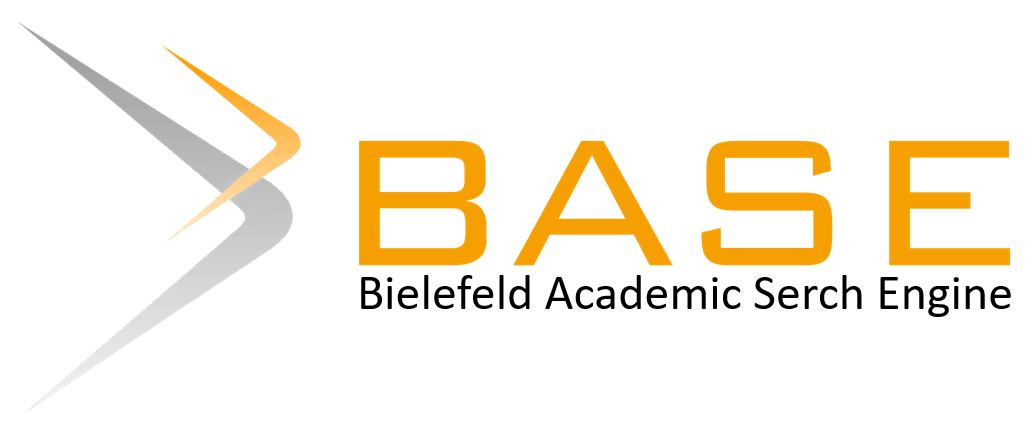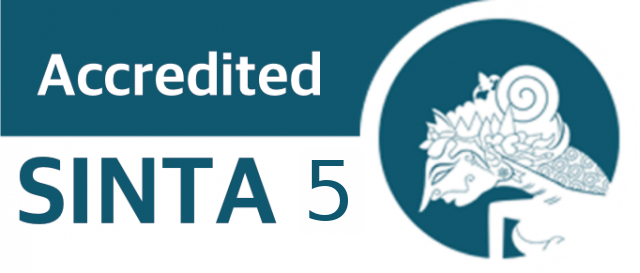Pengaruh Ekstrak Daun Kemangi (<em>Ocimum basilicum</em> L.) Terhadap Pertumbuhan <em>Streptococcus pneumonia</em>e Secara <em>In Vitro</em>
DOI:
https://doi.org/10.30595/hmj.v5i3.15840Keywords:
Daun kemangi, Antibakteri, Streptococcus pneumoniaeAbstract
Streptococcus pneumoniae  is the most common bacterium that causes community-acquired pneumonia. Basil leaves (Ocimum basilicum L.) have antibacterial compounds. The results of the phytochemical screening showed that basil leaves contain saponins, tannins and essential oils which have antibacterial activity. The purpose of this study was to prove the antibacterial effect of basil leaf extract (Ocimum basilicum L.) on the growth of Streptococcus pneumoniae . This study was conducted using the disc diffusion method, namely by soaking paper discs in basil leaf extract which had been prepared with concentration solutions of 25%, 50%, 75% and 100% for 15-30 minutes, then incubated at 37oC for 24 hours, then observed. clear zone formed. The results of this study were clear zones formed at each concentration of basil leaf extract. Basil leaf extract at concentrations of 25%, 50% and 75% can inhibit the growth of Streptococcus pneumoniae  and the minimum inhibitory concentration is 25%.
Keywords: Basil leaves (Ocimum basilicum L.), Antibacterial, Streptococcus pneumoniae
References
1. Dion CF, Ashurst JV. Streptococcus Pneumoniae. StatPearls [Internet]. 2021 Aug 11 [cited 2022 May 14]; Available from: URL : https://www.ncbi.nlm.nih.gov/books/NBK470537/
2. Wang C, Chen Y, Fang C, Zhou M, Xu H, Jing C, et al. Antibiotic resistance profiles and multidrug resistance patterns of Streptococcus pneumoniae in pediatrics. Medicine (Baltimore).2019;98(24):1–7.
3. Ludwig G, Ercibengoa M, Esteva C, Sanchez EV, Alonso M, Mu C. Changes in the serotype distribution of Streptococcus pneumoniae causing otitis media after PCV13 introduction in Spain. PloS One: 2018;13(12): 1–12.
4. Subramanian K, Henriques NB, Normark S. Emerging concepts in the pathogenesis of the Streptococcus pneumoniae: From nasopharyngeal colonizer to intracellular pathogen. Cell Microbiol. 2019;21(11):1–10.
5. Weiser JN, Ferreira DM, Paton JC. Streptococcus pneumoniae: transmission, colonization and invasion. Nat Rev Microbiol [Internet]. 2018 Jun 1 [cited 2022 May 14];16(6):355. Available from: /pmc/articles/PMC5949087/
6. Riskesdas. Laporan Nasional Riskesdas. Jakarta : Lembaga Penerbit Bada Penelitian dan Pengembangan (LPB); 2018.
7. Perhimpunan Dokter Paru Indonesia. Pneumonia Komuniti (Pedoman diagnosis dan penatalaksanaan). Jakarta :PDPI; 2003;6.
8. Grief SN, Loza JK. Guidelines for the Evaluation and Treatment of Pneumonia. Prim Care - Clin Off Pract. 2018;45(3):485–503.
9. Moujaber GE, Osman M, Rafei R, Dabboussi F, Hamze M. Molecular mechanisms and epidemiology of resistance in Streptococcus pneumoniae in the middle east region. J Med Microbiol. 2017;66(7):847–58.
10. Guntur A, Selena M, Bella A, Leonarda G, Leda A. Kemangi (Ocimum basilicum L.): kandungan kimia, teknik ekstraksi, dan uji aktivitas antibakteri. Journal of Food and Pharmaceutical Sciences. 2021;9(3):513–28.
11. Putri IA, Fatimura M, Bakrie M. Pembuatan minyak atsiri kemangi (Ocimum basilicum L .) dengan metode distilasi uap langsung. Jurnal PGRI Palembang. 2021;6:149–56.
12. Kumalasari MLIF, Andiarna F. Uji fitokimia ekstrak etanol daun kemangi (Ocimum basilicum L.). Indones J Heal Sci. 2020;4(1):39–44.
13. Silalahi M. Minyak essensial pada kemangi (Ocimum basilicum L.). J Pro-Life. 2018;5(2):557–66.
14. Bhattamisra SK, Kuean CH, Chieh LB, Yan VLY, Lee CK, Hooi LP, et al. Antibacterial activity of geraniol in combination with standard antibiotics against Staphylococcus aureus, Escherichia coli and Helicobacter pylori. Nat Prod Commun. 2018;13(7):791–3.
15. Kindangen OC, Yamlean PVY, Wewengkang DS. Formulasi gel antijerawat ekstrak etanol daun kemangi (Ocimum basilicum L.) dan uji aktivitasnya terhadap bakteri Staphylococcus aureus secara in vitro. Pharmacon. 2018;7(3):283–93.
16. Syarifuddin AN, Purba RA, Boru SN, Marbun RAT. Uji aktivitas antibakteri ekstrak etanol daun kemangi (Ocimum basilicum L.) terhadap bakteri Streptococcus mutans. J Farm. 2020;2(2):69–76.
17. Brooks GF, Butel JS, Morse SA. Mikrobiologi Kedokteran. Edisi 23. Jakarta: EGC;2007
18. Streptococcus pneumoniae: Information for Clinicians | CDC [Internet]. [cited 2022 May 15]. Available from: URL: https://www.cdc.gov/pneumococcal/clinicians/streptococcus-pneumoniae.html
19. Nutrient agar | Principle | Composition | Preparation [Internet]. [cited 2022 Jun 16]. Available from: https://microbiologie-clinique.com/nutrient-agar.html
20. Please answer FROM Penicilium to the END Thanks Fill | Chegg.com [Internet]. [cited 2022 Jun 16]. Available from: https://www.chegg.com/homework-help/questions-and-answers/please-answer-penicilium-end-thanks-fill-following-table-use-following-pictures-show-trans-q60096994
21. Mu A, Suryad A, Mustapa MA, Hiola F, Basiru S. Uji Aktivitas antibakteri ekstrak metanol daun kecubung (Datura metel L .) terhadap bakteri Streptococcus pneumoniae dan Klabsiella pneumoniae. 2021;1(3):179–89.
22. Bergenfelz C, Hakansson AP. Streptococcus pneumoniae Otitis Media Pathogenesis and how it informs our understanding of vaccine strategies. Curr Otorhinolaryngol Rep. 2017;5(2):115–24.
23. Yau B, Hunt NH, Mitchell AJ, Too LK. Blood-brain barrier pathology and CNS outcomes in Streptococcus pneumoniae meningitis. Int J Mol Sci. 2018;19(11) : 1-22.
24. Regunath H, Oba Y. Community-Acquired Pneumonia. StatPearls [Internet]. 2021 Aug 11 [cited 2022 May 14]; Available from: https://www.ncbi.nlm.nih.gov/books/NBK430749/
25. Rider AC, Bradley WF Community-acquired pneumonia. Emerg Med Clin North Am. 2020;36(4): 665-683.
26. Muthumbi E, Lowe BS, Muyodi C, Getambu E, Gleeson F, Scott JAG. Risk factors for community-acquired pneumonia among adults in Kenya : a case – control study. Pneumonia (Nathan).2017;9:1–9.
27. Javier HT, Victoria MZ, Isabel MM. Community-Acquired Pneumonia: A Focused Review. Am J Med Case Reports. 2020;9(1):45–52.
28. Kolditz M, Ewig S. Community-Acquired Pneumonia in Adults. Dtsch Arztebl Int. .2017; 114(49):838-848.
29. Purwitasari M, Burhan EZ. Soepandi P. Peranan prokalsitonin pada pneumonia komunitas. Indones J Infect Dis. 2017;2(2):33.
30. Alia B, Nasreen J, Ajij A, Saima NB, Shahidar H, Syeda H. Phytochemical and pharmacological studies on Ocimum basilicum L. - a review. Int J Cur Res Rev. 2018; 04(23): 73-83.
31. Redha A. Flavonoid: Struktur, Sifat Antioksidatif dan Peranannya Dalam Sistem Biologis. J Berlin. 2010;9(2):196–202.
32. Karak P. Biological activities of flavonoids : an overview introduction : polyphenols are chemical. International Journal of Pharmaceutical Sciences and Research. 2019;10(4) : 1567-1574.
33. Kaczmarek B. Tannic acid with antiviral and antibacterial activity as a promising component of biomaterials - a mini review. Materials. 2020;13:1-13.
34. Noer S, Pratiwi RD, Gresinta E. Penetapan kadar senyawa fitokimia (tanin, saponin dan flavonoid) sebagai kuersetin pada ekstrak daun inggu (Ruta angustifolia L.). J Eksakta. 2018;18(1):19–29.
35. Maczka W, Winska K, Grabarczyk M. One hundred faces of geraniol. Molecules. 2020;25(14):1–16.
36. Nurhayati LS, Yahdiyani N, Hidayatulloh A. Perbandingan pengujian aktivitas antibakteri starter yogurt dengan metode difusi sumuran dan metode difusi cakram. J Teknol Has Peternak. 2020;1(2):41.
37. Susanty S, Bachmid F. Perbandingan metode ekstraksi maserasi dan refluks terhadap kadar fenolik dari ekstrak tongkol jagung (Zea mays L.). J Konversi. 2016;5(2):87.
38. CLSI. M100 performance standards for antimicrobial susceptibility testing. 30th Edition. Wayne : Clinical and Laboratory Standards Insitute; 2020.
39. Winastri NLAP, Muliasari H, Hidayati E. Aktivitas antibakteri air perasan dan rebusan daun calincing (Oxalis corniculata L.) terhadap Streptococcus mutans. Ber Biol. 2020;19(2).
40. Ikalinus R, Widyastuti S, Eka Setiasih N. Skrining fitokimia ekstrak etanol kulit batang kelor (Moringa oleifera). Indones Med Veterinus. 2015;4(1):77.
41. Purwati S, Lumora SVT, Samsurianto. Skrining fitokimia daun saliara (Lantana camara L.) Sebagai pestisida nabati penekan hama dan insidensi penyakit pada tanaman holtikultura di Kalimantan Timur. Pros Semin Nas Kim. 2017;153–158.
42. Mutmainnah B. Skrining fitokimia senyawa metabolit sekunder dari ekstrak etanol buah delima (Punica granatum L.) dengan metode uji warna. Ekp. 2017;13(3):1576–1580.
43. Prayoga E. Perbandingan efek ekstrak daun sirih hijau (Piper betle L.) dengan metode difusi disk dan sumuran terhadap pertumbuhan bakteri Staphylococcus aureus. Found Phys. 2013;34(3):361–403.
44. Pizzi A. Tannin-based biofoams-A review. J Renew Mater. 2019;7(5):477–92.
45. Halimu RB, S.Sulistijowati R, Mile L. Identifikasi kandungan tanin pada sonneratia alba. J Ilm Perikan dan Kelaut. 2017;5(4):93–97.
46. Ariyani F, Eka SL, Edi SF. Ekstraksi minyak atsiri dari tanaman sereh dengan menggunakan pelarut metanol, aseton, dan n-heksana. Widya Teknik. 2008;7(2); 124-133.
47. Warsiti W, Wardani SD, Ramadhan AA, Yuliani R. Uji aktivitas antibakteri ekstrak etanol bawang dayak (Eleutherine palmifolia L.) terhadap bakteri Staphylococcus aureus. Pharmacon J Farm Indones. 2019;15(2):75–82.
48. Akhavan BJ, Khanna NR, Vijhani P.Amoxicillin. PubMed [Internet]. [cited 2022 Oct 20]. Available from: https://pubmed.ncbi.nlm.nih.gov/29489203/
49. Vollmer W, Massidda O, Tomasz A. The cell wall of Streptococcus pneumoniae. Gram-Positive Pathog. 2019;284–303.
50. Najjar R. Application and Characterization of Surfactants - Google Buku [Internet]. 2017 [cited 2022 Dec 2]. Available from: URL : https://books.google.co.id/books?hl=id&lr=&id=v9CPDwAAQBAJ&oi=fnd&pg=PA183&dq=saponin+as+antibacterial+mechanism&ots=BeZV3lnc4k&sig=YCxD2e_v0m_8_ZC7a1k7qTItw7Y&redir_esc=y#v=onepage&q&f=false
51. Pakadang SR, Salim HS. Sensitivitas Streptococcus pneumoniae, Staphylococcus aureus dan Staphylococcus epidermidis terhadap buah asam jawa (Tamarindus indica L). Media Farm. 2021;16(1):77.
52. Lira MHP , Andrade Júnior FP, Moraes GFQ, Macena G da S, Pereira F de O, Lima IO. Antimicrobial activity of geraniol: an integrative review. J Essent Oil Res. 2020;32(3):187–197.
53. Zeniusa P, Ramadhian MR, Nasution SH, Karima N. Uji daya hambat ekstrak etanol teh hijau terhadap Escherichia coli secara in vitro. Majority. 2019;8(2):136–43.
54. Mulyadi M, Wuryanti W, Sarjono PR. Konsentrasi hambat minimum (KHM) kadar sampel alang-alang (Imperata cylindrica) dalam etanol melalui metode difusi cakram. J Kim Sains dan Apl. 2017;20(3):130–5.
Downloads
Published
Issue
Section
License
For submission of manuscripts to the Herb-Medicine Journal, the authors must certify that:
I have been authorized by my co-author to submit the manuscript to the Herb-Medicine Journal
I hereby declare, on behalf of myself and my co-authors, that:
The submitted manuscript is original work and has not been published in another peer-reviewed journal or is being considered for publication by another journal. Also, the manuscript does not infringe any existing copyright or other third party rights.
The manuscript does not contain material that may violate the law, slander, or SARA, in any way, violates the terms and conditions contained in the agreement
I/we have taken care that the scientific knowledge and all other statements contained in the manuscript are in accordance with authentic facts and formulas and will not, if followed appropriately, harm the user
No liability shall be assumed by Herb-Medicine Journal, its staff or members of the editorial board for any injury and/or damage to persons or property as a matter of product liability, negligence or otherwise, or from the use or operation of any method, product instructions, advertising , or ideas contained in publications by the Herb-Medicine Journal
Authors who publish in the Herb-Medicine Journal certify that all authors have read and agree to the contents of the Cover Letter or the Terms and Conditions. Plagiarism is strictly prohibited, and by submitting a manuscript for publication, the author agrees that the publisher has the legal right to take appropriate action against the author, if plagiarism or false information is found. Once submitted to the Herb-Medicine Journal, authors will not withdraw their manuscript at any stage prior to publication.
The author owns the copyright and grants the journal rights for first publication with the work simultaneously licensed under a Creative Commons Attribution License which allows others to share the work with acknowledgment of the work's authorship and initial publication in this journal.
Authors may enter into separate additional contractual agreements for the non-exclusive distribution of the published journal version of the work (for example, posting it to an institutional repository or publishing it in a book), with acknowledgment of its initial publication in this journal.
Authors are permitted and encouraged to post their work online (for example, in institutional repositories or on their websites) prior to and during the submission process, as this can lead to productive exchanges, as well as earlier and larger citation of published work (See The Effects of Open Access).
Untuk pengiriman naskah ke Herb-Medicine Journal, penulis harus menyatakan bahwa:
- Saya telah diberikan otorisasi oleh rekan penulis saya untuk memasukkan naskah ke Herb-Medicine Journal
- Saya dengan ini menyatakan, atas nama saya dan rekan penulis saya, bahwa:
- Naskah yang dikirimkan adalah karya asli dan belum pernah diterbitkan dalam jurnal peer-review lain atau sedang dipertimbangkan untuk diterbitkan oleh jurnal lain. Serta, naskah tidak melanggar hak cipta yang ada atau hak pihak ketiga lainnya.
- Naskah tidak mengandung materi yang mungkin melanggar hukum, memfitnah, atau SARA, dengan cara apa pun, melanggar syarat dan ketentuan yang tercantum dalam perjanjian
- Saya / kami telah berhati-hati bahwa pengetahuan ilmiah dan semua pernyataan lain yang terkandung dalam naskah sesuai dengan fakta dan formula otentik dan tidak akan, jika diikuti dengan tepat, merugikan pengguna
- Tidak ada tanggung jawab yang ditanggung oleh Herb-Medicine Journal, stafnya atau anggota dewan editorial untuk setiap cedera dan/atau kerusakan pada orang atau properti sebagai masalah pertanggungjawaban produk, kelalaian atau sebaliknya, atau dari penggunaan atau pengoperasian metode, produk apa pun instruksi, iklan, atau ide yang terkandung dalam publikasi oleh Herb-Medicine Journal
Penulis yang menerbitkan dalam Herb-Medicine Journal menyatakan bahwa semua penulis telah membaca dan menyetujui isi Surat Pengantar atau Syarat dan Ketentuan. Plagiarisme dilarang keras, dan dengan menyerahkan naskah untuk publikasi, penulis setuju bahwa penerbit memiliki hak hukum untuk mengambil tindakan yang pantas terhadap penulis, jika ditemukan plagiarisme atau informasi palsu. Setelah diserahkan ke Herb-Medicine Journal, penulis tidak akan menarik naskah mereka pada tahap apa pun sebelum dipublikasikan.
Penulis memiliki hak cipta dan memberikan hak jurnal untuk publikasi pertama dengan karya yang secara simultan dilisensikan di bawah Lisensi Creative Commons Attribution yang memungkinkan orang lain untuk berbagi karya dengan pengakuan kepengarangan karya dan publikasi awal dalam jurnal ini.
Penulis dapat membuat perjanjian kontrak tambahan yang terpisah untuk distribusi non-eksklusif versi jurnal yang diterbitkan dari karya tersebut (misalnya, mempostingnya ke repositori institusional atau menerbitkannya dalam sebuah buku), dengan pengakuan atas publikasi awalnya di jurnal ini.
Penulis diizinkan dan didorong untuk memposting pekerjaan mereka secara online (misalnya, dalam repositori institusional atau di situs web mereka) sebelum dan selama proses pengajuan, karena dapat menyebabkan pertukaran yang produktif, serta kutipan yang lebih awal dan lebih besar dari karya yang diterbitkan (Lihat The Effect of Open Access).













